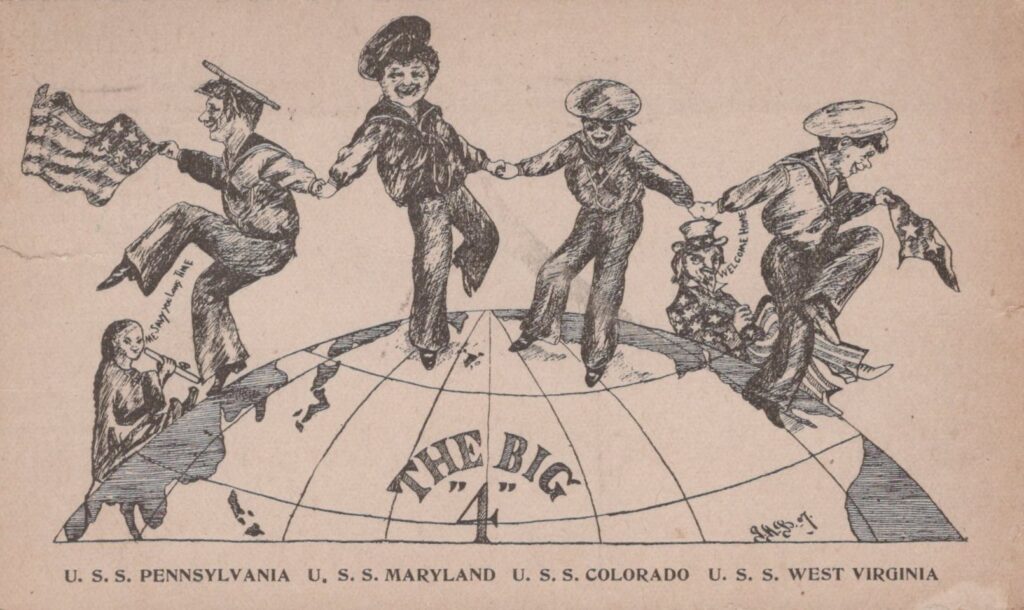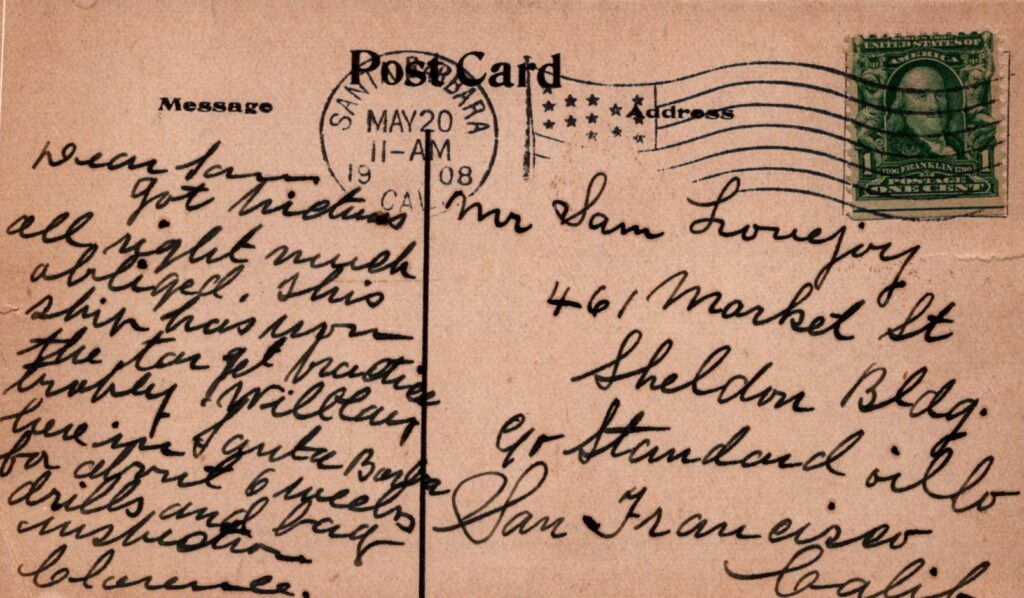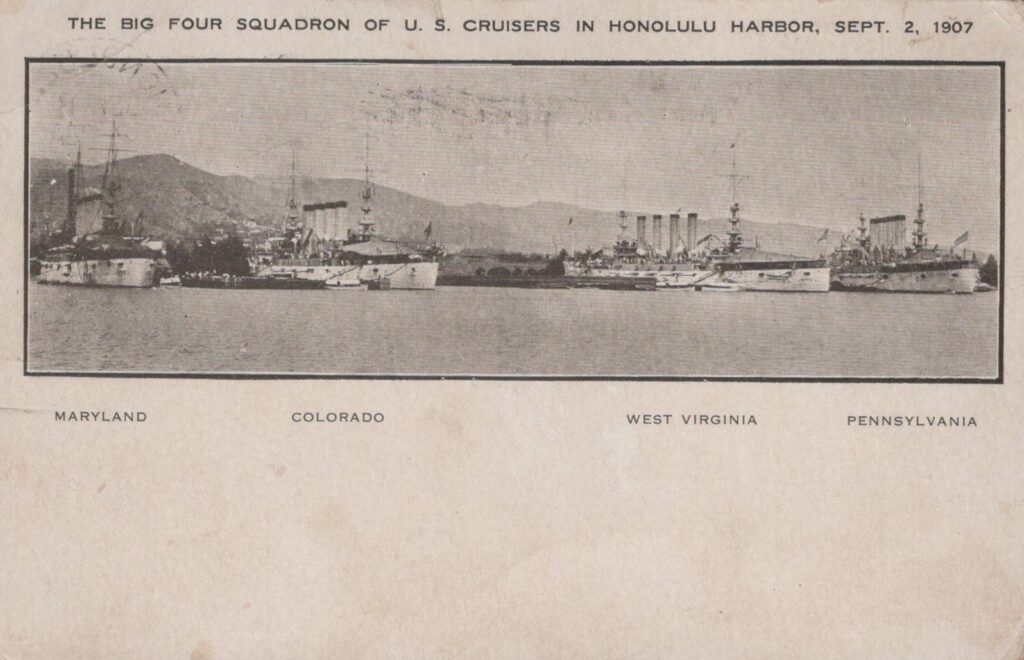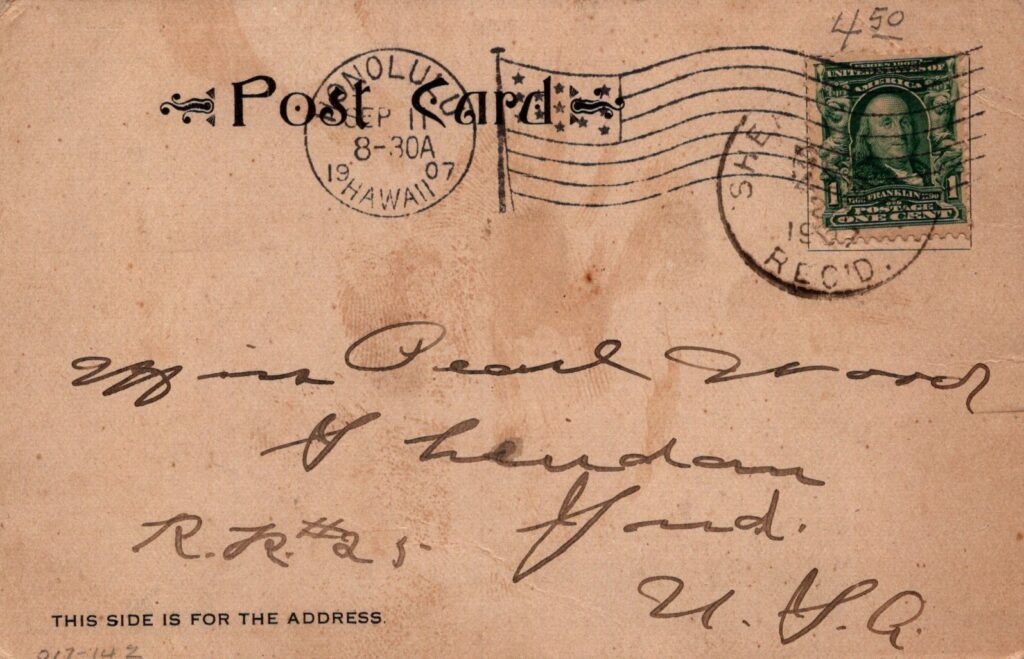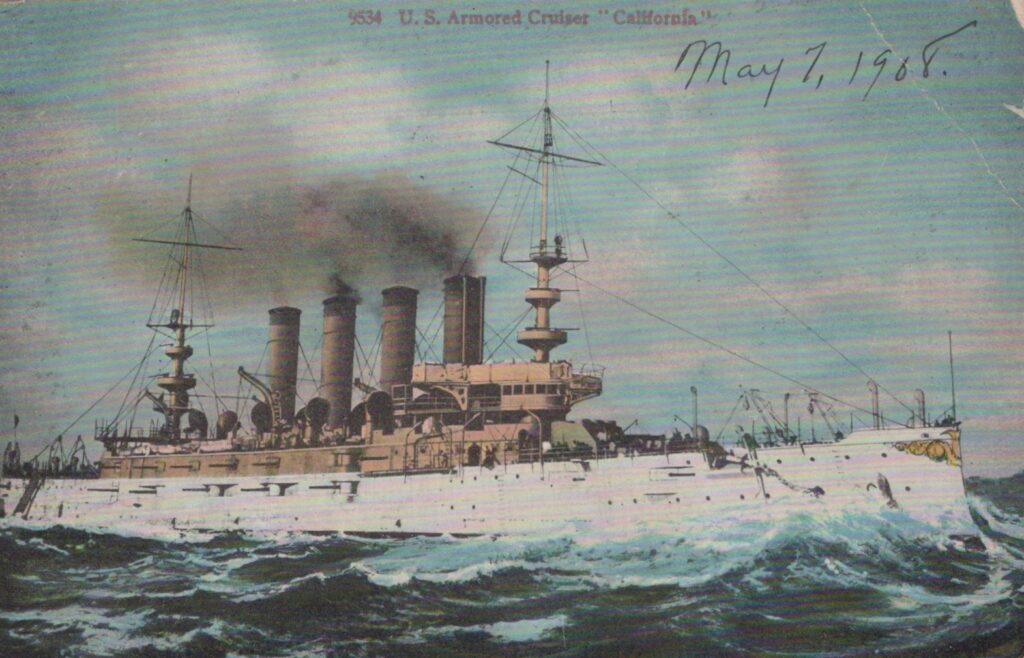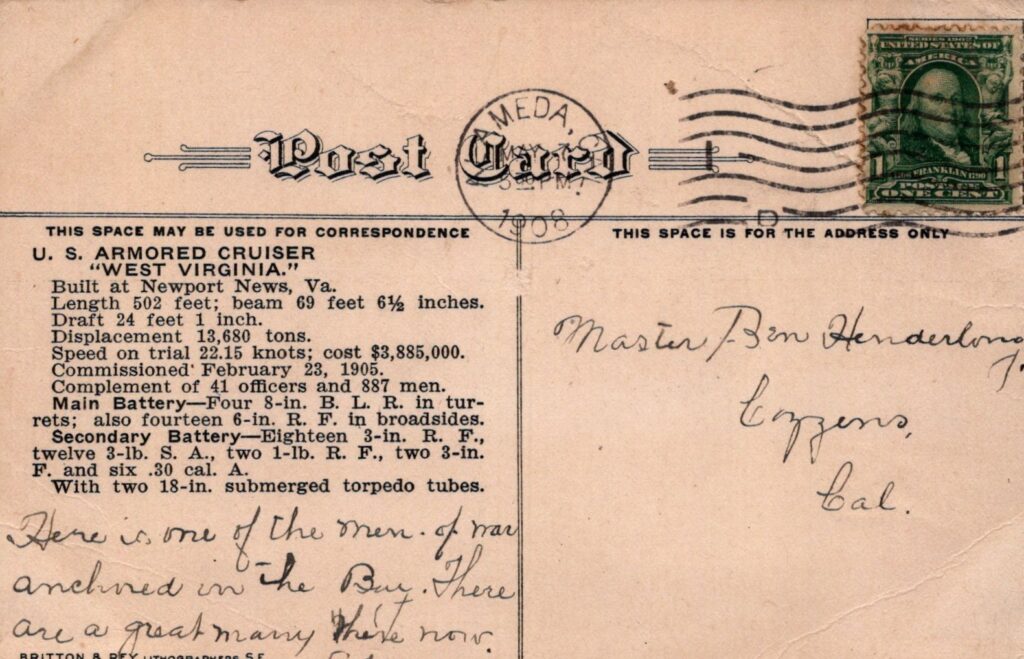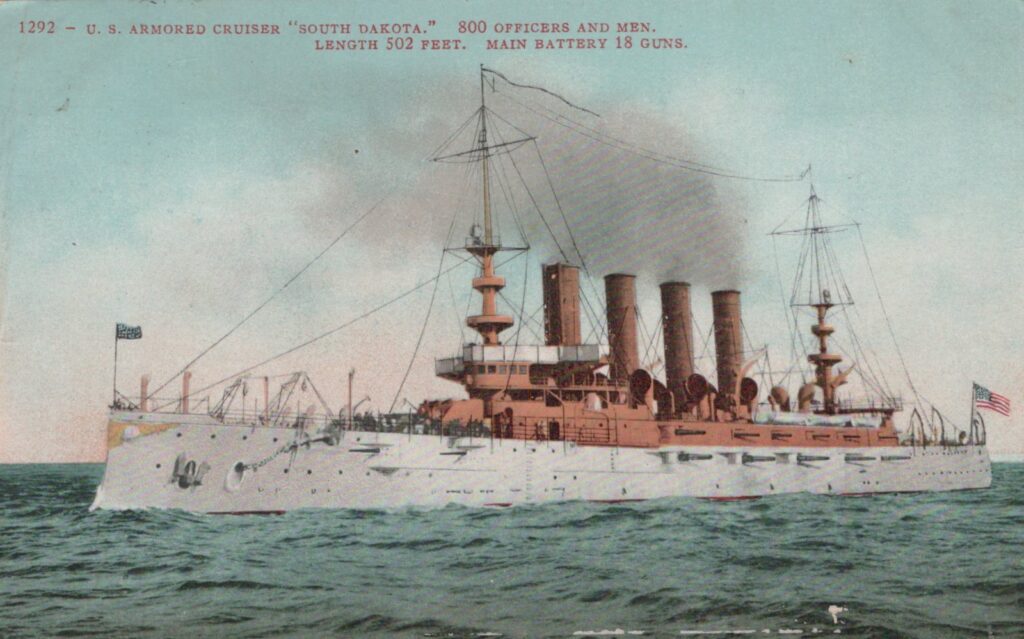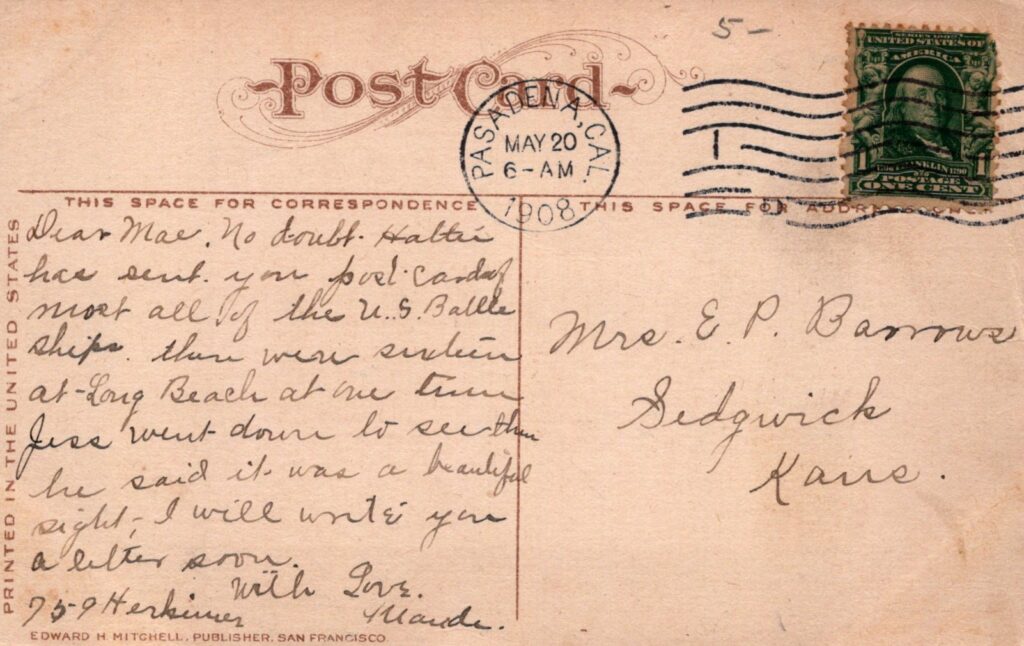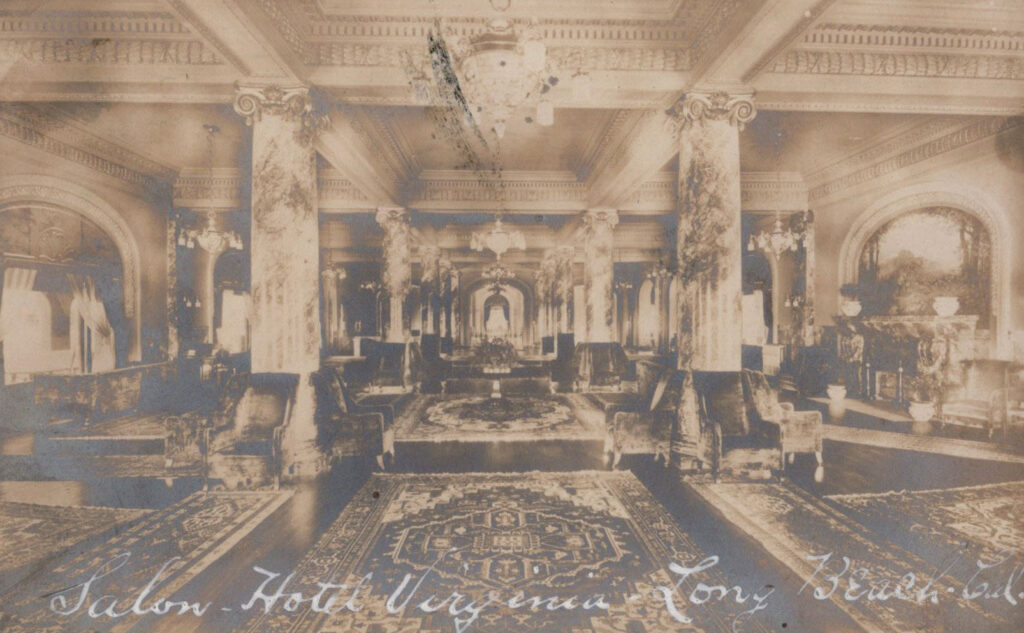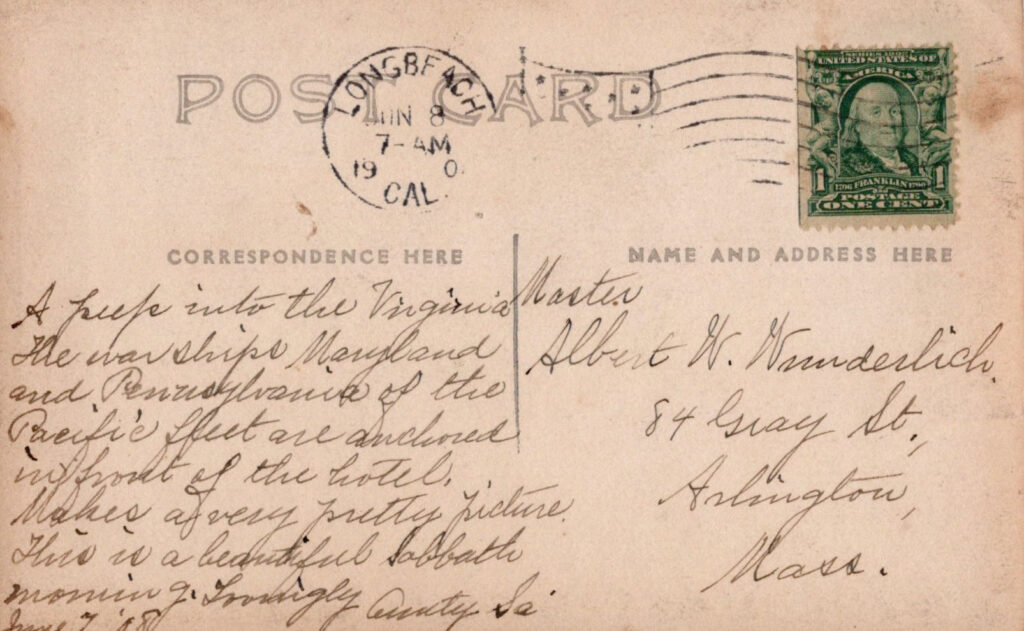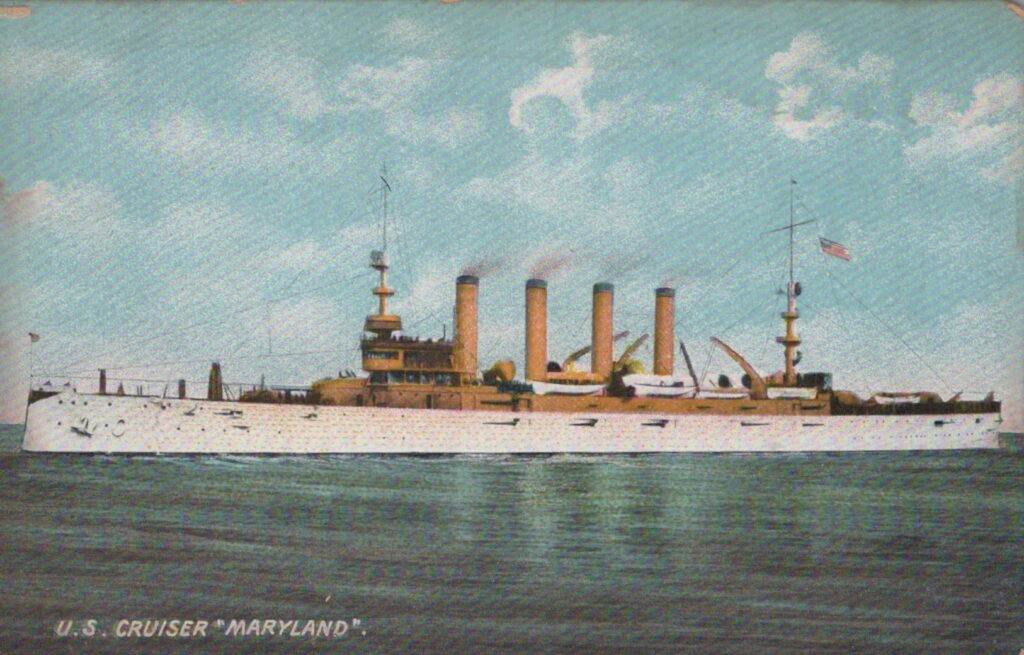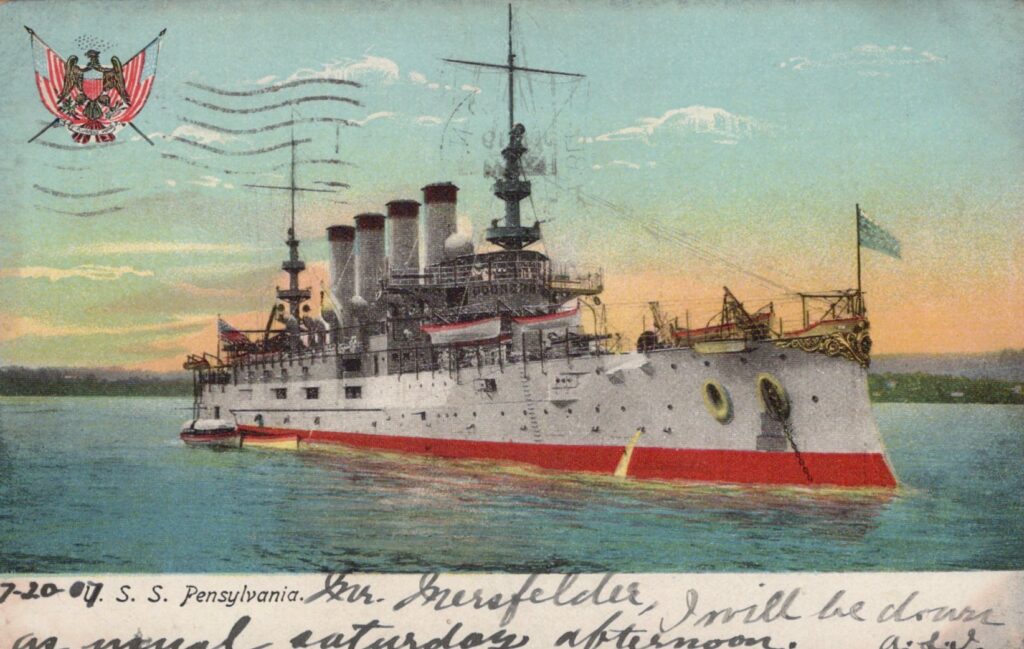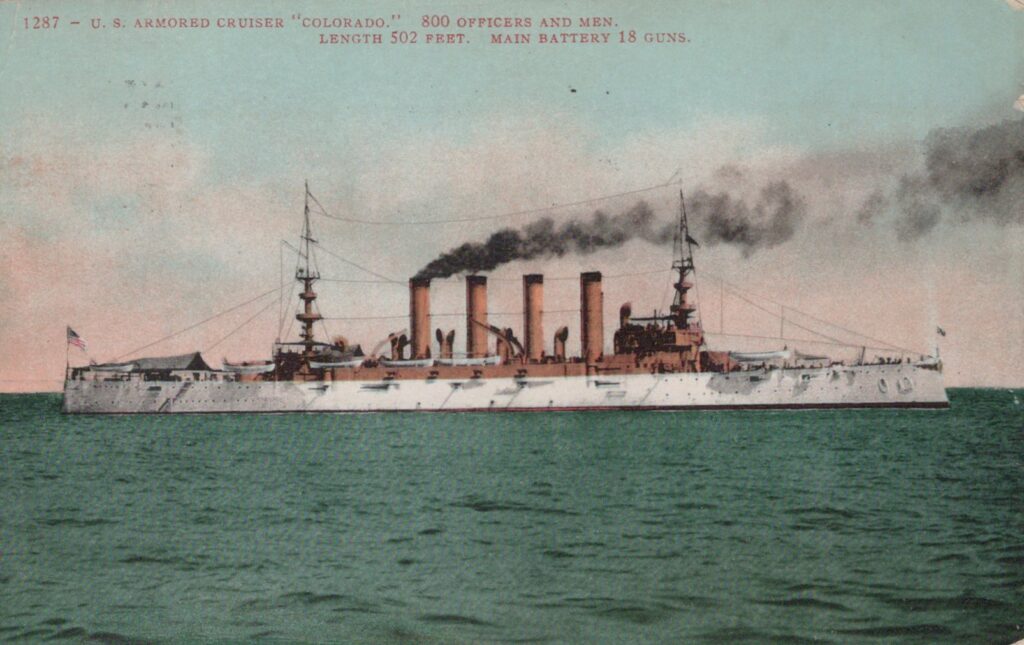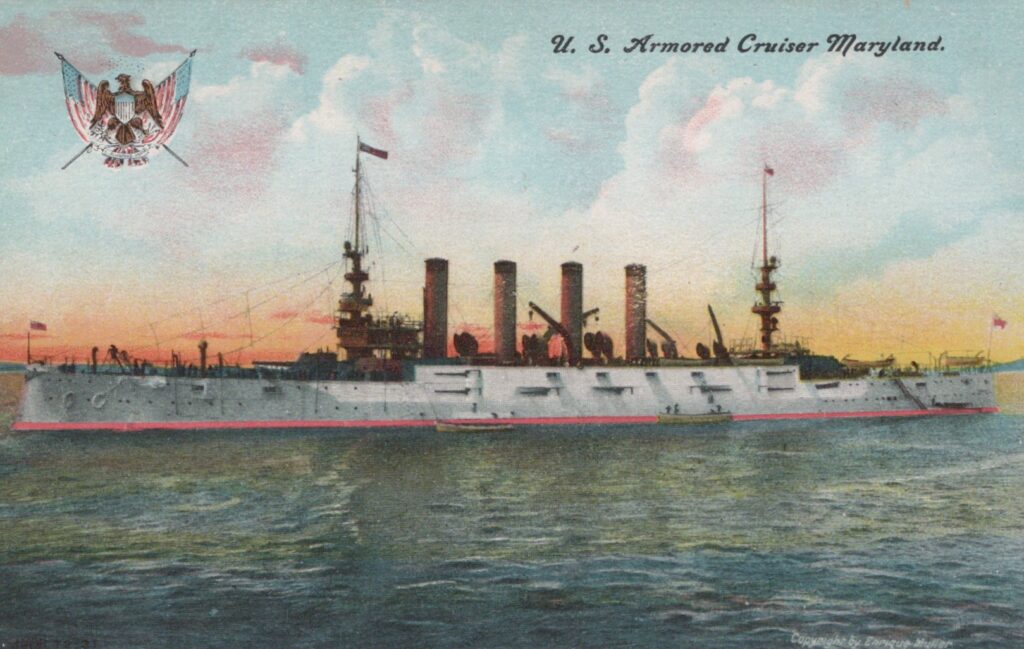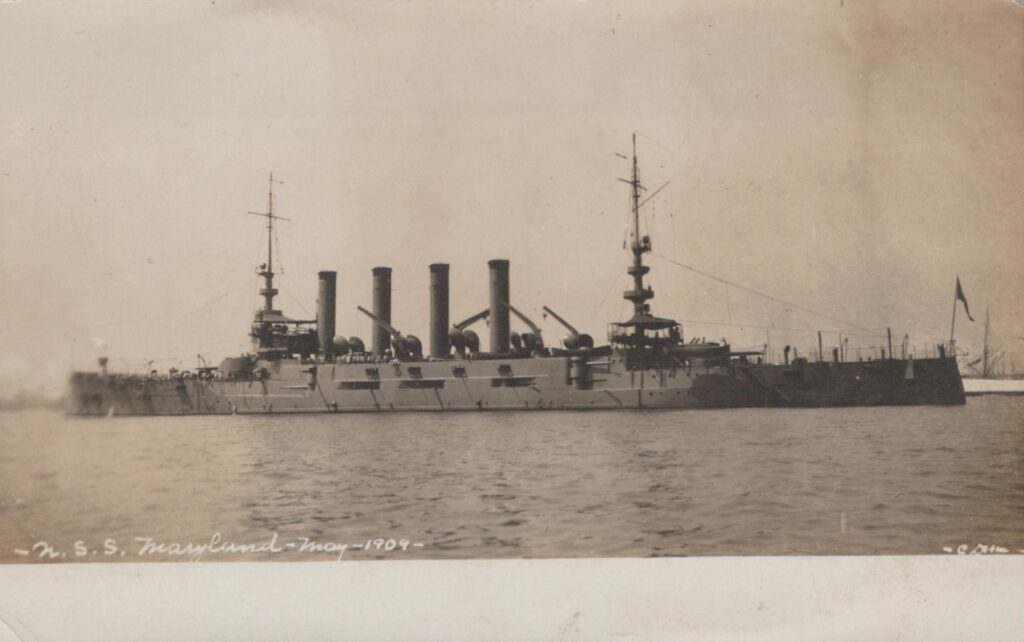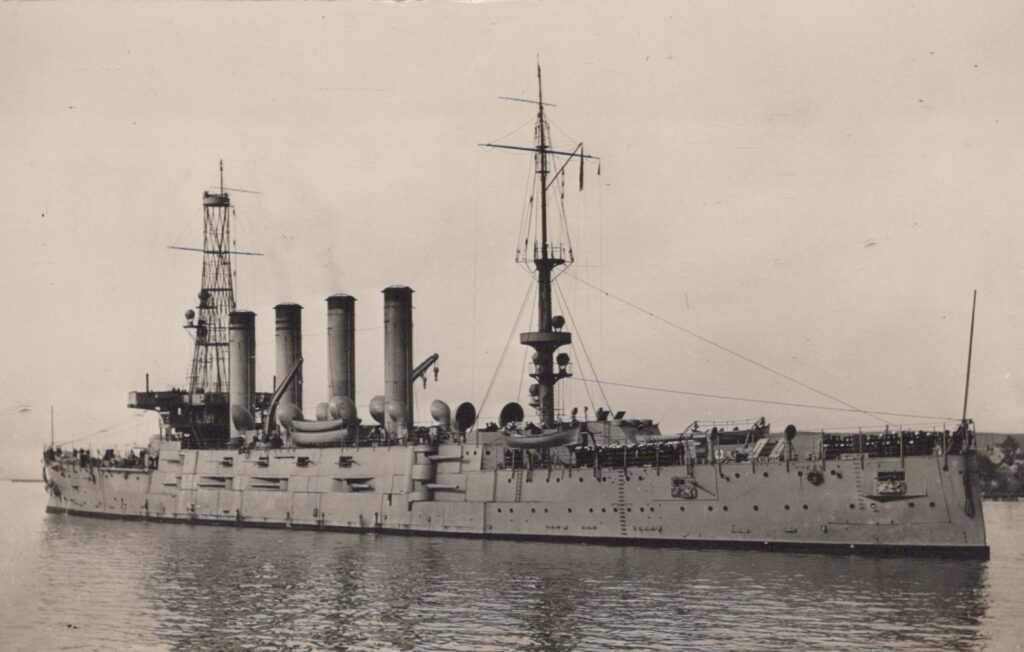Apologies, but no results were found for the requested archive. Perhaps searching will help find a related post.
President Roosevelt had decided to significantly build up the standing of the Pacific Fleet. The 16-battleships of the Atlantic Fleet would sail around the world, but the size and strength of the Pacific Fleet would need to be bolstered. Additionally, having a strong Pacific Fleet during the cruise of the battleship fleet, would be a further deterrence to aggression for Japan to consider. At the end of this build-up more than 24-ships would be added to the Pacific Fleet.
The first major transfer of ships was the new armored cruisers Washington and Tennessee. These new cruisers were designed with four 10-inch guns in twin turrets and were capable of doing 22-knots. They were built in response to foreign developments to move from fast scouts and convoy escorts to capital ships that could engage in battle at sea. The Battle of Tsushima in 1905 presented a clear need for this change. After Washington and Tennessee arrived in Magdalena Bay, on January 1st, 1908 Rear Admiral Sebree took command forming the Second Division of First Squadron. USS California and South Dakota were the other members.
In addition, President Roosevelt decided to bring the Navy's four new cruisers of the First Division in the South China Sea back home. These ships, the USS Colorado, USS Maryland, USS Pennsylvania, and USS West Virginia sailed to join Admiral Sebree when he arrived in San Francisco. Some of these units joined Second Division on the trip to the Northwest. These four ships were known as "The Big Four." They were all Pennsylvania Class cruisers that had been built with a 6-inch armor belt at the waterline and 5-inch upper belt. They were armed with four 8-inch guns in twin turrets and designed to achieve 22 knots. "The Big Four" had been serving in Asiatic Fleet and were experienced with the weather, military situation, and politics. With this addition Admiral Sebree had a formidable fleet of armored cruisers to augment the battleships should it be needed.
On August 17th, 1908, and seven armored cruisers departed San Diego, California to steam first to Honolulu and then a direct transit to Pago Pago, Samoa. President Roosevelt had given orders for Rear Admiral Swinburne's cruiser fleet to tow seven torpedo boat destroyers to Samoa. West Virginia towed Preble, Maryland towed Stewart, Pennsylvania towed Perry, Tennessee towed Hopkins, Washington towed Hull, California towed Truxtun, and South Dakota towed Whipple. This placed an additional force of ships in the Pacific that could potentially support the fleet during a hostile conflict.
The Pacific squadron, first Division
This group of photo postcards show units of the Pacific Squadron
Long Beach, CA., June 7, 1908
"A peep into the Virginia, the warships Maryland and Pennsylvania of the Pacific Fleet are anchored in front of the hotel. Makes very pretty picture. This is a beautiful Sabbath morning."
The Hotel Virginia had opened on April 1, 1908 as a example of pure luxury. The 1.25 million dollar hotel was filled with furniture imported from Europe and carved rosewood, mahogany and walnut. The cost was $8.50 per night, including dinner, quite a price when the average American was making 22-cents and hour.

